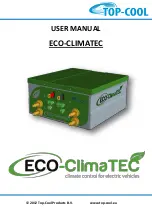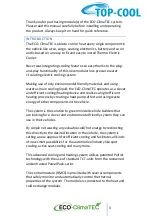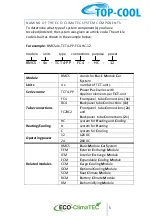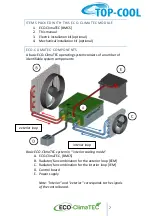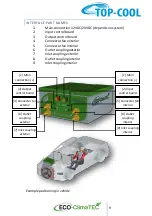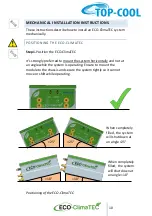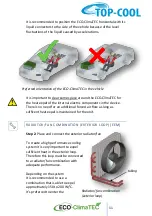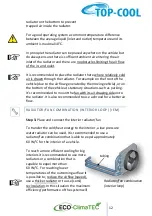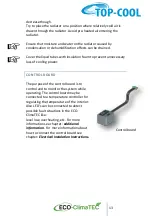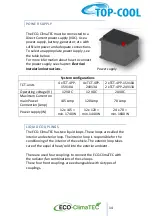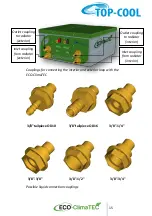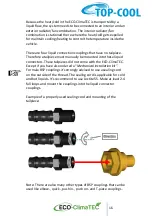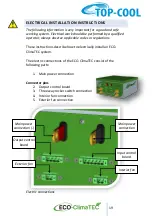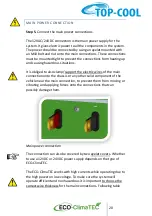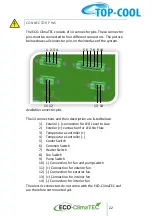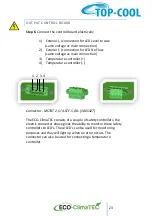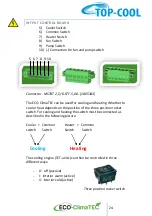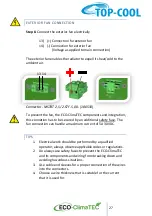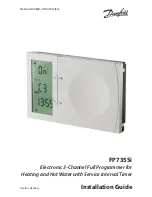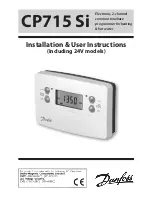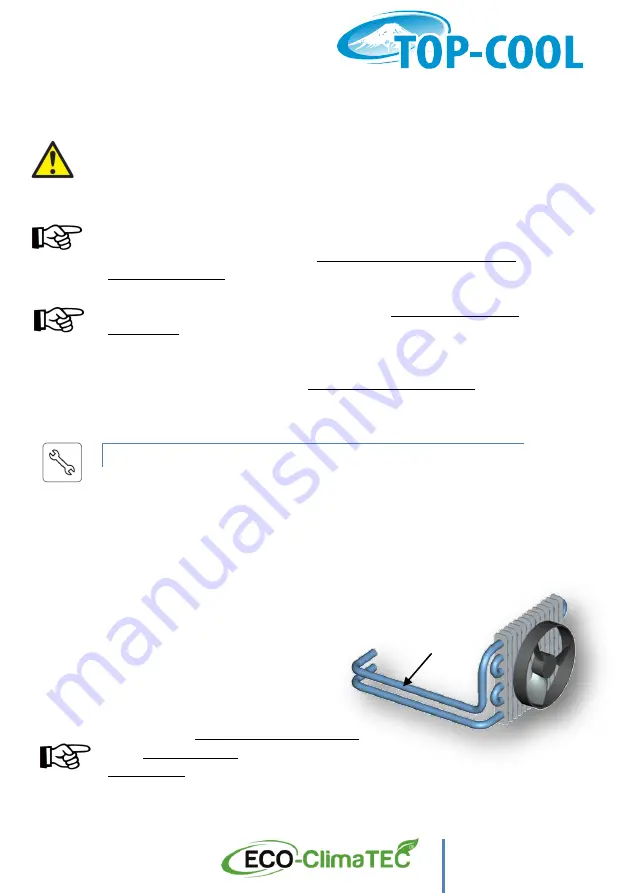
12
radiator on the bottom to prevent
trapped air inside the radiator.
For a good operating system a common temperature difference
between the average liquid (inlet and outlet) temperature and its
ambient is maximal 10°C.
In principle the radiator can be placed anywhere in the vehicle but
do always ensure there is sufficient ambient air entering the air
inlet of the radiator and there are no obstacles limiting the air flow
of the in- and oulet.
It is recommended to place the radiator there where relatively cold
air is drawn through the radiator. For example on the front of the
vehicle (due to the air flow generated by the moving vehicle), or on
the bottom of the vehicle at stationary situations such as parking.
It’s recommended to mount the fan with its air drawing side onto
the radiator. It is also recommended to use a shroud for a better air
flow.
RADIATOR/FAN COMBINATION (INTERIOR LOOP) [IEM]
Step 3.
Place and connect the interior radiator/fan
To transfer the cold/heat energy to the interior, a low pressure
water radiator can be used. It is recommended to use a
radiator/fan combination that is able to expel approximately
60 W/°C for the interior of a vehicle.
To reach a more efficient cooling for big
interiors it is recommended to use more
radiators or a combination that is
capable to expel more than
60 W/°C. For reaching lower
temperatures of the outcoming airflow it
is possible to; reduce the airflow (speed),
use a thicker radiator or to use (semi)
recirculation. In this situation the maximum
efficiency/performance of the system will
tubing
Radiator/fan
combination
(interior loop)

